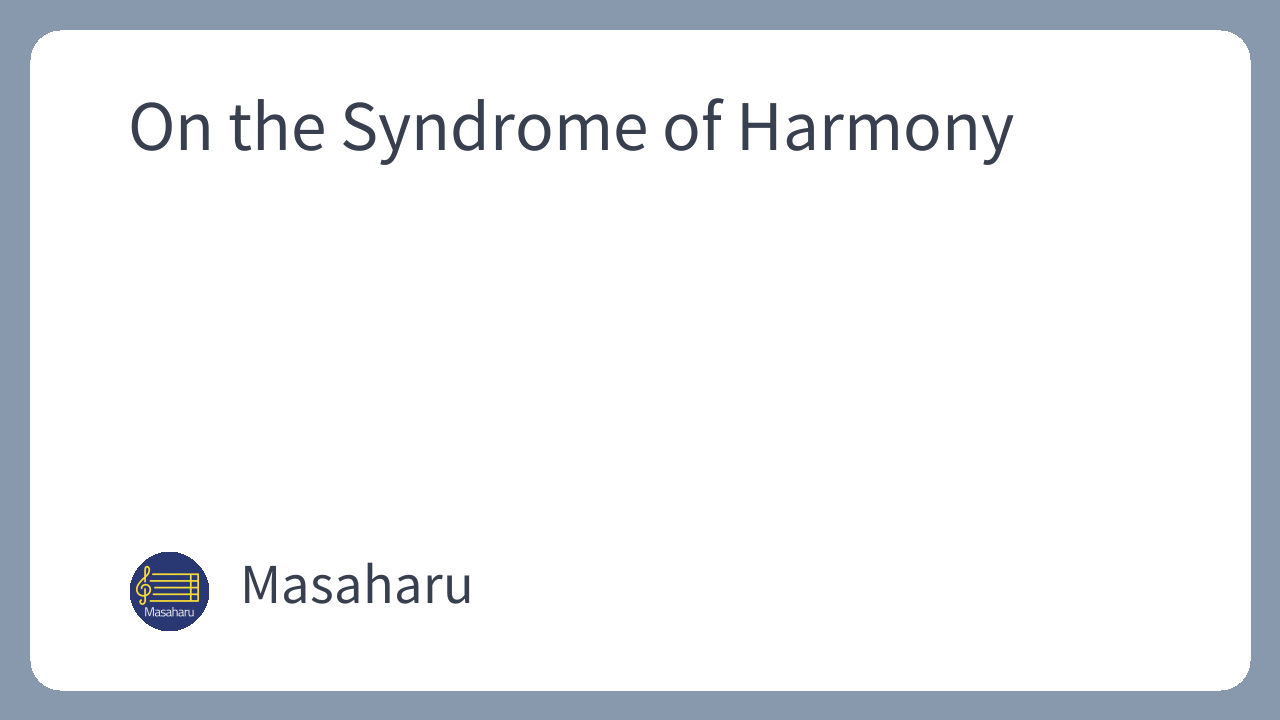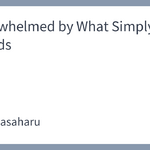(Originally posted: October 22, 1999)
When we say “harmony,” we tend to envision something rather narrowly defined. But in this case, I’d like you to think of harmony as something broader—something like the “shifting of collections of sound.”
Before my teenage years, regardless of genre, I had a tendency to focus on this “shifting of sound clusters” whenever I listened to music. I would hear beauty in those transitions, and be moved by them. It’s not that I was dismissing rhythm or distinctive phrases (like melody), but rather, I feel the melodies that moved me most deeply always came hand in hand with striking harmonies.
Perhaps unsurprisingly, the pieces I composed during that time often had harmony at their core. I would begin by crafting the harmonic space, then weave a melody into it—what you might call a “harmony-first” approach to composition.
Looking back now, I believe this compositional method offered me a tremendous advantage. It attuned me to the delicate nuances of harmonic color, bold contrasts, and the sense of balance between them. But later on, as I ran into various creative walls, I began to become aware of what I now call the “syndrome of harmony.”
What had started out as a vague, overall impression of “shifting sound clusters” gradually solidified into a sequence of chords, and eventually became compartmentalized in my compositions as a single element—“the harmony part.” To put it plainly, I found myself stuck in rigid constructs: “melody,” “harmony,” and “rhythm section.” This was exacerbated by a bad habit of trying to grasp music purely through logic.
Caught in this pattern, it’s no wonder I failed to appreciate other musical beauties—like the interweaving of phrases—or the richness that arises from their synergy. In fact, during my time at music school, I struggled to break out of this shell. I came to realize that what I thought I had understood was actually just a framework I had built around myself.
Sound, when taken in purely through the ears, is just sound. It’s only when the listener’s sensitivity elevates it that it becomes a musical phenomenon. If that’s true, then a certain kind of intellect—one divorced from sensitivity and lacking in feedback—must be approached with caution. For me, I can’t help but feel that this is exactly what gave rise to the syndrome of harmony.
Looking back, I now think that a “syndrome” is what happens when one element imposes limitations on one’s own creativity.
Even now, this syndrome of harmony occasionally rears its head, but I take comfort in the fact that at least I’ve become more aware of it. I wonder if any of you can relate. In any case, I’m sure I’ll continue to encounter various “syndromes” going forward, but I hope to remain as sensitive as possible to their symptoms—and from there, discover new insights.


